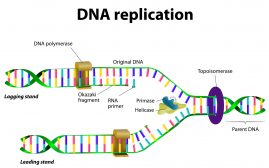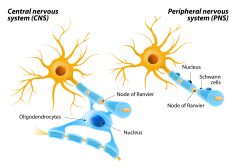Definition
noun, plural: cis fatty acids
A fatty acid in a cis configuration, i.e. two hydrogen atoms adjacent to the double bond are on the same side of the chain
Supplement
Unsaturated fatty acids are those containing at least one double bond. This indicates that they can absorb additional hydrogen atoms. One way to classify unsaturated fatty acids is based on their configuration. They may occur in cis or trans configuration. Near the double bond, the two hydrogen atoms stick out either on the same side or on the opposite sides of the chain. When the two hydrogen atoms stick out on the same side of the chain, the fatty acid is said to be in a cis configuration. This results in a kink due to the two hydrogen atoms repelling each other slightly. The more double bonds in the cis configuration, the less flexible is the fatty acid. Thus, the linoleic acid with two double bonds would have a more pronounced bend compared with the oleic acid that has only one double bond. The kink or the bend on the fatty acid molecule prevents them from stacking together and becoming solid in room temperature. The cis is the natural and the common configuration of unsaturated fatty acids.
Compare:
- trans fatty acid
See also:







